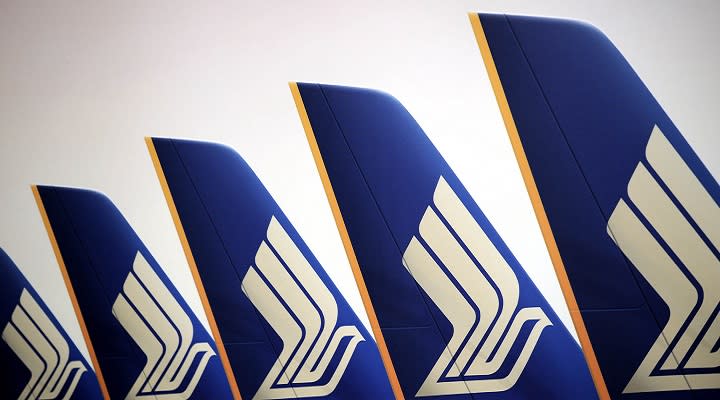CGS-CIMB downgrades SIA to 'reduce' on valuation grounds, flags stiffer competition in coming FY2025

SIA shares have gained a third year to date
Singapore Airline’s outlook for the current year remains “very strong”. However, given the recent run-up in its share price, CGS-CIMB’s Raymond Yap has joined a growing list of analysts to downgrade the stock on valuation grounds.
At end of July 3, SIA closed at $7.33, up 33.52% year to date – and which has overshot Yap’s earlier $6.15 price target with a “hold” call.
As such, Yap has in his July 3 research note cut his call to “reduce” while raising his target price to $6.53.
For the current FY2024 ending March 2024, the airline, by many indications, is still flying high from the post-pandemic recovery.
The airline’s passenger load factor remains “very strong” at a historical high of around 88% for April and May – two of the more recent months with data available.
“These high load factors suggest that average ticket pricing is also likely to remain at very high levels, as SIA has no issue filling up its planes and hence has no incentive to cut prices,” writes Yap.
“We think that passengers are likely to plan forward and book ahead for the year-end holidays, as well as for Lunar New Year travel in early-2024. These forward bookings at the current high ticket prices will likely extend SIA’s run of strong profitability for FY24F, in our view,” he adds.
However, Yap warns that competition could intensify in the coming FY2025, as other airlines join SIA in restoring capacity further.
Between late-Jun and late-Oct 2023, forward airline schedules suggest that SIA will only increase its seat capacity restoration by 3% pts (against 2019), compared to +12.1% pts for Cathay Pacific, +8.2% pts for other southeast Asian carriers, +7.8% pts for Korean carriers, and +7% pts for Australian carriers, notes Yap.
He figures that SIA’s seat capacity restoration is now slowing down. First, seat capacity is already at a high level. Next, deliveries of SIA’s 787-10 orders have been delayed and last but not least, regulators in Indonesia and China, two major markets, are taking longer than expected to give their go-ahead for flights to further resume.
“On the balance of probability, SIA’s competitors will likely continue to restore their seat capacities at a faster pace than SIA next year because they still have so much potential, especially Cathay Pacific and the Chinese airlines,” reasons Yap.
For example, Cathay Pacific has set a target to restore 70% of its 2019 available seat km capacity by end of 2023, and 100% by end-2024; Chinese airlines so far appear to be reticent in international capacity restoration, this could very well change in the future if Chinese outbound travel demand picks up, adds Yap.
He notes that SIA is now trading at 1.3 historical price to book value, almost 3 standard deviations above the mean since 2011.
The new target price of $6.53 is pegged to 1.04x P/BV.
The shares will trade ex-dividend on Aug 1, following which entitled shareholders will receive 28 cents per share. Following that, a “key support” of the share price is “potentially” removed.
See Also:
Click here to stay updated with the Latest Business & Investment News in Singapore
Changi Airport Group swings from losses of $838 million to FY2023 earnings of $33 million
SATS' post FY2023 earnings result draws mixed reaction from analysts
Get in-depth insights from our expert contributors, and dive into financial and economic trends

 Yahoo Finance
Yahoo Finance 